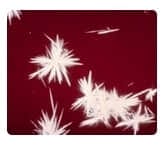Exam Details
Exam Code
:ASCP-MLTExam Name
:MEDICAL LABORATORY TECHNICIAN - MLT(ASCP)Certification
:ASCP CertificationsVendor
:ASCPTotal Questions
:572 Q&AsLast Updated
:Apr 15, 2025
ASCP ASCP Certifications ASCP-MLT Questions & Answers
-
Question 181:
Post-hepatic obstruction is characterized by a marked increase in alkaline phosphatase, GGT, conjugated bilirubin, as well as other hepatic enzymes. The slight rise of ALT suggests that the issue is not hepatitis. Renal and cardiovascular
failure do not match the symptom of jaundice or the abnormal laboratory values.
Chem
Which of the following conditions would be suggested by a jaundiced patient experiencing a marked rise in alkaline phosphatase, conjugated bilirubin, and a slight rise in ALT:
A. Cardiovascular disease
B. Hepatitis
C. Post-hepatic obstruction
D. Renal failure
-
Question 182:
A patient with influenza would be placed in:
A. airborne isolation.
B. droplet isolation.
C. protective isolation.
D. body fluid isolation
-
Question 183:
These are tyrosine crystals

Urinalysis and Other Body Fluids
True or false? Cystine crystals are present on this slide.
A. True
B. False
-
Question 184:
Flow cytometry employs a combination of fluorescent antibody tagging of cells and analysis with laser light scatter. What principle(s) of flow cytometry are employed when performing immunophenotyping:
A. Defraction gradients
B. Impedance
C. Defraction gradients and impedance
D. Fluorescent antibody tagging and light scatter
-
Question 185:
This type of laboratory testing provides immediate assessment of the patient and can be performed at their bedside:
A. Centralized laboratory
B. Point-of-care testing (POCT)
C. High complex testing
D. Molecular testing
-
Question 186:
Fibers can be mistaken for casts on occasion, especially hyaline casts. Fibers, however, are usually thinner and appear less uniform in structure than casts do.
Urinalysis and Other Body Fluids
Which of the following artifacts may be mistaken for casts?
A. Air bubbles
B. Fibers
C. Coverslip scratches
D. Talc particles
-
Question 187:
Two CSF specimens were sent to the Lab with the following results:
Tube #1 = 11,200 rbc/μL
Tube #2 = 300 rbc/μL
The results on these CSF specimens are indicative of:
A. an infection
B. a recent subarachnoid hemorrhage
C. a traumatic tap
D. an old intracranial bleeding episode faulty lab equipment
-
Question 188:
The most common specimen analyzed in the hematology section is:
A. plasma.
B. whole blood.
C. urine.
D. serum.
-
Question 189:
The ratio of blood to anticoagulant in a light blue stopper tube is:
A. 10:1
B. 9:1
C. 5:1
D. 2:1
-
Question 190:
The body of a tapeworm is composed of successive segments known as proglottids. Each mature proglottid has both male and female reproductive structures. What is the anatomical feature of a tapeworm that possesses both male and female reproductive structures?
A. Brood capsule
B. Proglottid
C. Rostellum
D. Scolex
Related Exams:
Tips on How to Prepare for the Exams
Nowadays, the certification exams become more and more important and required by more and more enterprises when applying for a job. But how to prepare for the exam effectively? How to prepare for the exam in a short time with less efforts? How to get a ideal result and how to find the most reliable resources? Here on Vcedump.com, you will find all the answers. Vcedump.com provide not only ASCP exam questions, answers and explanations but also complete assistance on your exam preparation and certification application. If you are confused on your ASCP-MLT exam preparations and ASCP certification application, do not hesitate to visit our Vcedump.com to find your solutions here.